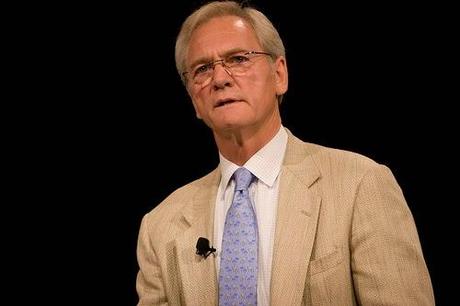
Don Siegelman
Another Alabama newspaper has called on wife-beating federal judge Mark Fuller to be removed from the bench. We know of at least four state newspapers who have called on Fuller to resign, but the Dothan Eagle took it a step further: It called for Fuller's impeachment.But like the other editorials, there is something missing from the Eagle's piece. It ignores Fuller's unethical conduct on the bench, while focusing only on his shortcomings as a husband and private citizen.
Those who paid close attention to Fuller's most famous case--the prosecution of former Governor Don Siegelman and former HealthSouth CEO Richard Scrushy--know Fuller was a public crook long before he became known as a private thug.
Fuller has been a bad judge for years, and he should be removed from the bench for that reason. But judges are pretty much untouchable for their corrupt acts from the bench, except on those rare occasions when the U.S. Department of Justice pursues criminal charges against them. The legal community usually binds together to protect corrupt judges, while the mainstream press ignores them, and the public is clueless about them.
That is a fact of American life that needs to change immediately. But for now, let's look at just one example of Fuller's professional crookedness, which resulted in two innocent citizens going to federal prison.
First, we have written several dozen posts showing that Siegelman and Scrushy were innocent of the corruption charges against them. They were convicted, in large part, because Fuller gave improper jury instructions, meaning the defendants were convicted of a "crime" that does not exist under the actual law.
But that is not nearly the worst of Fuller's unethical acts in the Siegelman/Scrushy trial. The worst one came near the beginning of the trial--and if Fuller had ruled correctly, the case would have been over before it had hardly begun.
That's because the alleged illegal acts involving the defendants took place almost a full year outside the five-year statute of limitations. We've already shown that Siegelman and Scrushy were innocent of the charges against them. But without Fuller's unlawful rulings at the outset, they never would have had to defend themselves at all.
How do two defendants go to trial on charges that are so old they are way outside the statute of limitations--and should have been dismissed as a matter of law? It happens when a corrupt judge allows the prosecution to get away with most anything.
In this case, Fuller let prosecutors get away with an indictment that was hopelessly vague. The normal solution for such a problem is for the judge to order a bill of particulars, forcing the prosecution to lay out its case with sufficient specificity. Without that, defendants don't know what wrongful acts they are alleged to have committed, and when they allegedly committed them. They are left to defend against what might be called "ghost charges."
As we showed in a previous post, even former Penn State assistant football coach Jerry Sandusky, now convicted as a child rapist, was given the benefit of a bill of particulars. Fuller denied that request for Siegelman and Scrushy. It only became apparent after days of testimony that the alleged wrongful acts had taken place in summer 1999. Given that the original indictment was issued in May 2005, that meant the charges were brought almost six years after the fact--well beyond the five-year statute of limitations.
Defense lawyers properly raised the statute of limitations defense again at the close of testimony, and Fuller cheated them a second time, on the same issue. Here is how we summed it up in a previous post:
If Fuller had ruled according to law, Siegelman and Scrushy never would have faced a trial. But Fuller didn't stop there; he cheated the defendants again after the trial was over. Defense lawyers filed a Rule 29 motion, asking for a judgment of acquittal because testimony had shown the key bribery charge was brought too late. Fuller wrongfully denied the motion, and the U.S. Eleventh Circuit Court of Appeals, misreading simple procedural law and butchering its own precedent, found that defense lawyers had waived the statute of limitations defense by failing to properly raise it at trial.
A clear reading of Rule 29 of the Federal Rules of Civil Procedure--plus a pertinent case styled Phillips v. U.S., 843 F. 2d 438 (11th Cir., 1988)--shows that the Siegelman/Scrushy defense team raised the issue in a proper fashion and did not waive it.
The public, and Alabama newspapers, are understandably outraged that Fuller stands charged of beating his wife--and faces a 24-month treatment program for alcohol, drug, and domestic-violence issues? But where is the outrage about his unethical conduct as a judge? Why does no one seem interested in holding him accountable for sending innocent individuals to prison?
